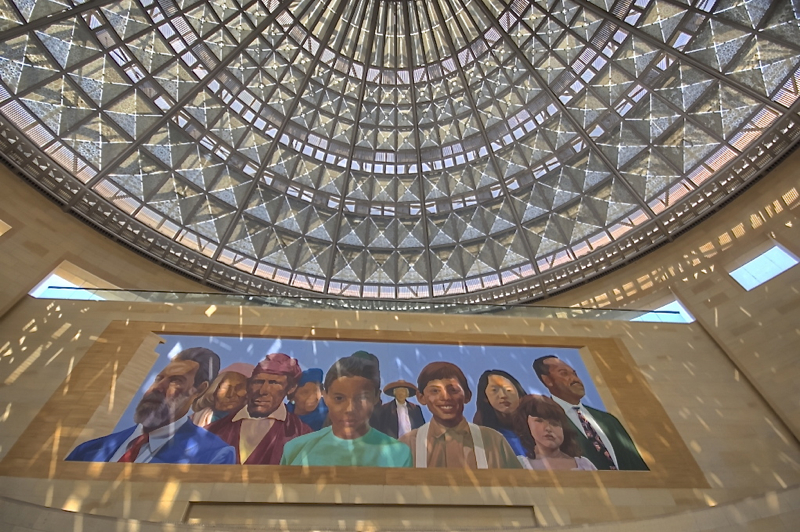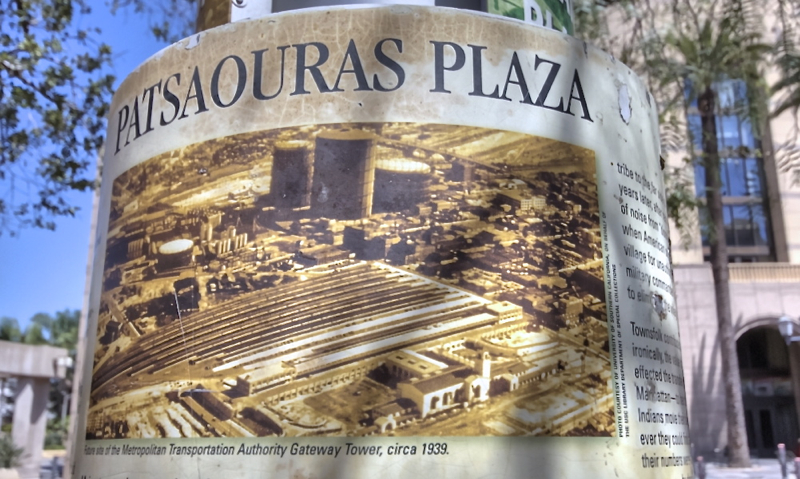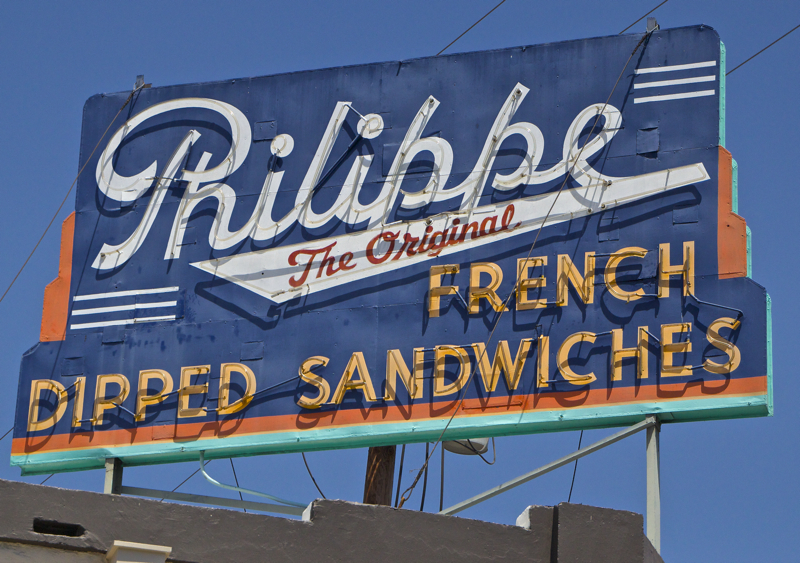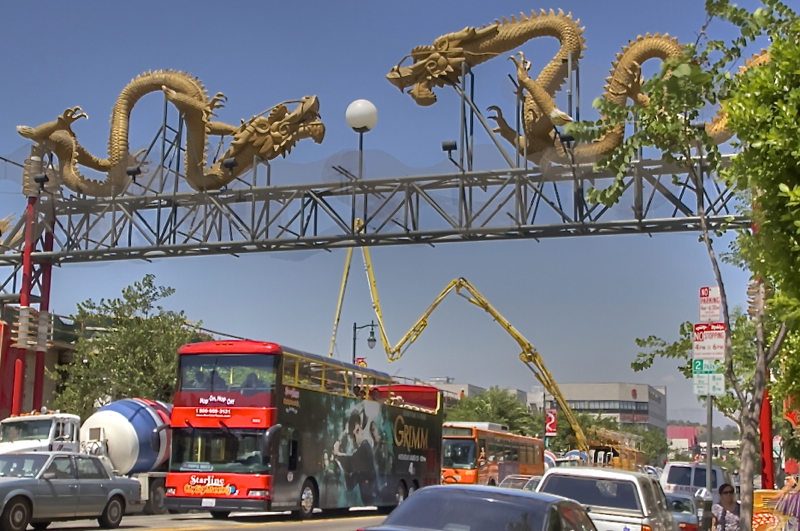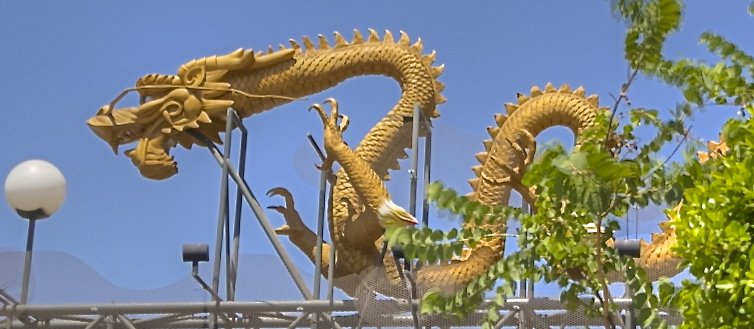Yours truly with my e-ticket printed at home, a recently-added feature on Amtrak.
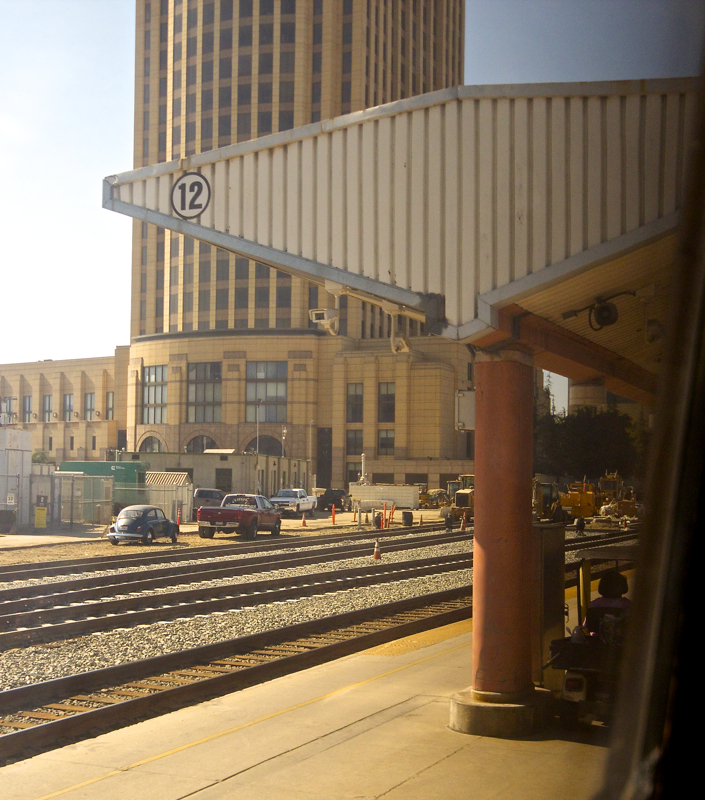
LAUPT's new tracks and canopy.
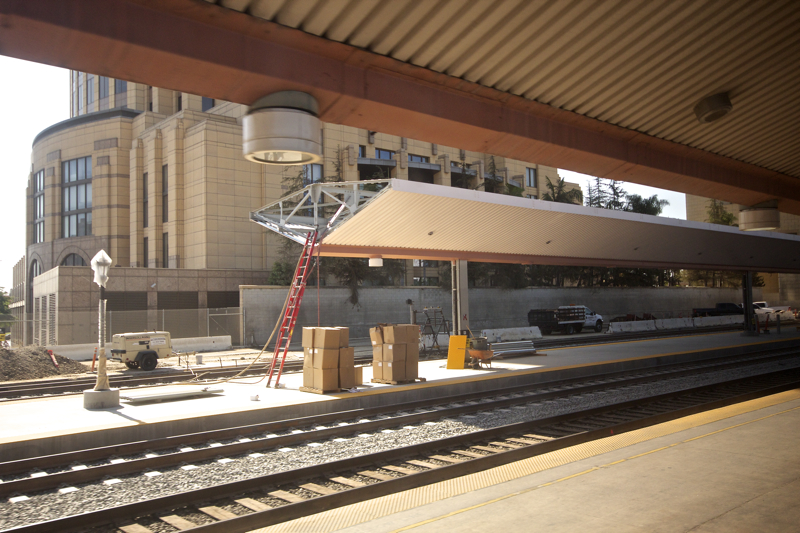
New platform and canopy is the same color scheme as the old canopies. Old covers will be repainted.
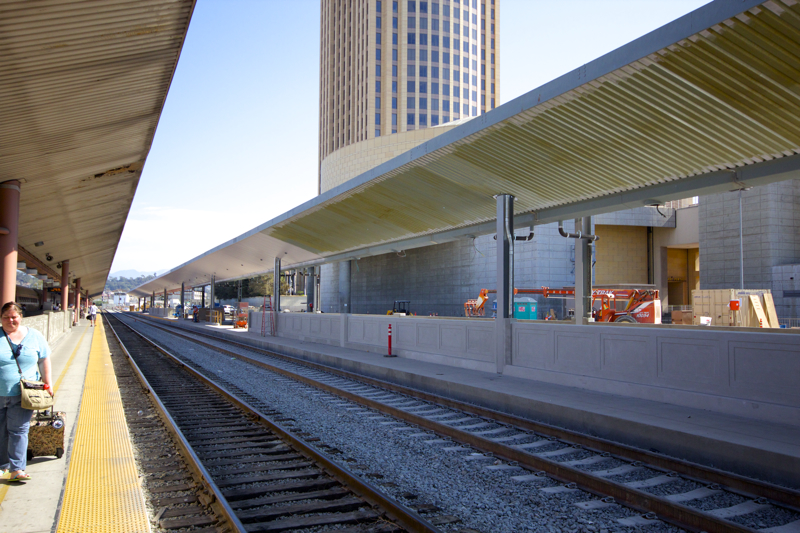
The new platform and canopy,
right, was being painted. New tracks 13 and 14 have concrete ties. Here, 12 still has wooden ties.
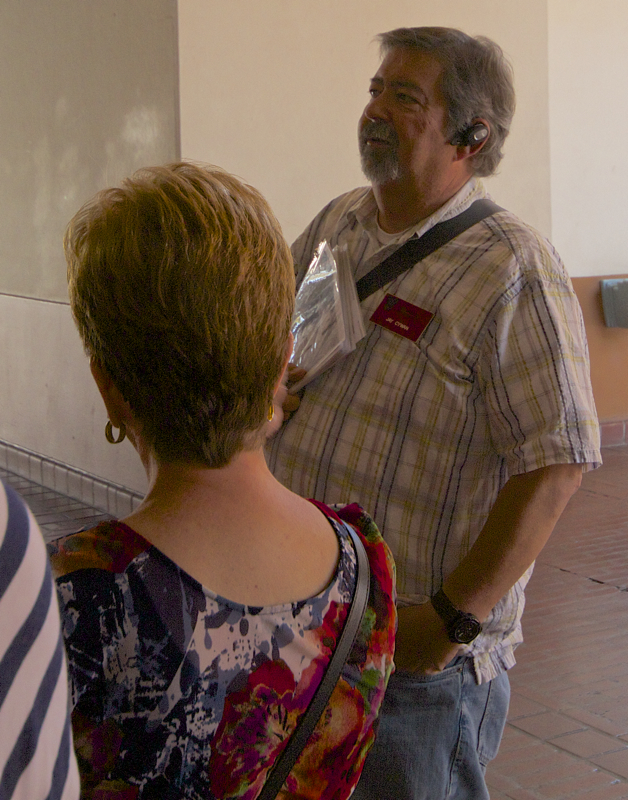
Jay Cywan, our guide for the 2.5 hr. tour,
above, met us by the Information Booth in the Vestibule
The Vestibule
The imposing entrance lobby opens through monumental arches to the
ticket concourse, the waiting room, and the south arcade leading to the
former Fred Harvey Restaurant. The room's large expanses of
undecorated surfaces and clean geometric lines are hallmarks of the
Moderne (Art Deco) style and reinforce the monumental quality of the
space. Spanish Colonial Revival details, such as arches, Moorish
stars, and multicolored tile accents, link the station thematically to
the romance of the Los Angeles' Spanish and Mexican heritage.


The map above is in a brochure Jay gave each of us.
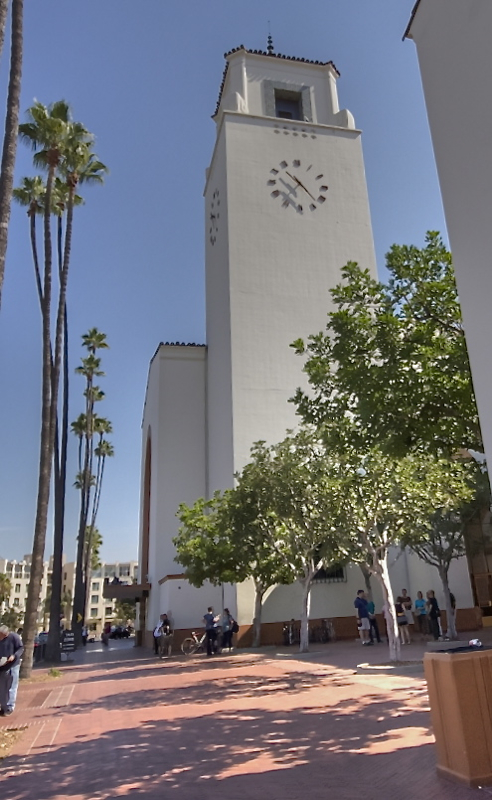
Clock Tower from the south. The clock is directly above the Main Entrance and Vestibule.
The Los Angeles Union
Passenger Terminal (LAUPT), as it was officially known, was designed by
the father son team of Parkinson and Parkinson. They also
designed the LA Memorial Coliseum (1923) and Bullocks Wilshire
(1929). Southern Pacific Railroad, which arrived in 1876, Santa
Fe, which arrived in 1885, and Union Pacific, which arrived in 1905,
also had stations here previously and helped the Parkinson's in the
design of the "Union" station that would serve all three railroads.
The station blends two architectural styles popular at the time of its
construction, 1939: Spanish Colonial Revival and Art Deco.
Spanish Colonial Revival architecture romanticized California's Spanish
past with decorative elements such as arches, bell towers, gardens, and
church-like interiors. The Art Deco movement originated in the
1920s and featured soaring vertical forms, geometric shapes, and
brilliant color. Santa Barbara epitomizes the Spanish Colonial
Revival style.
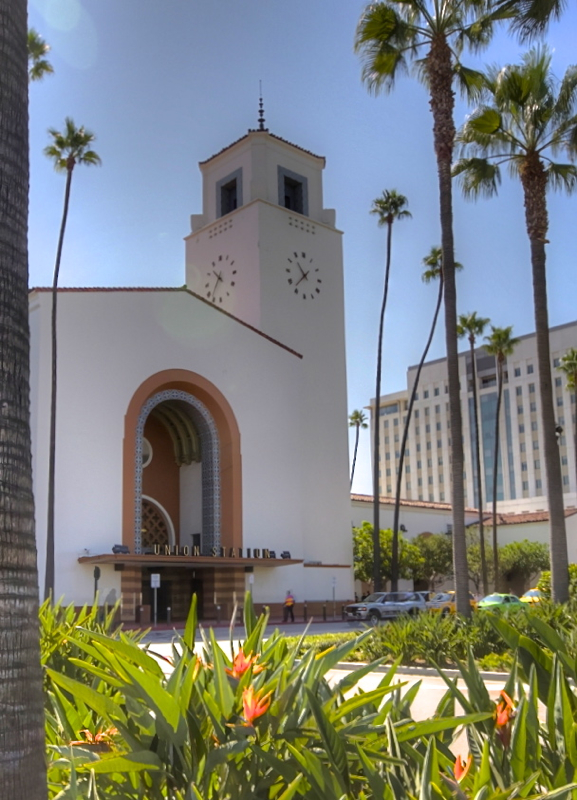
Main Entrance and Clock Tower from entry drive from Alameda Street.
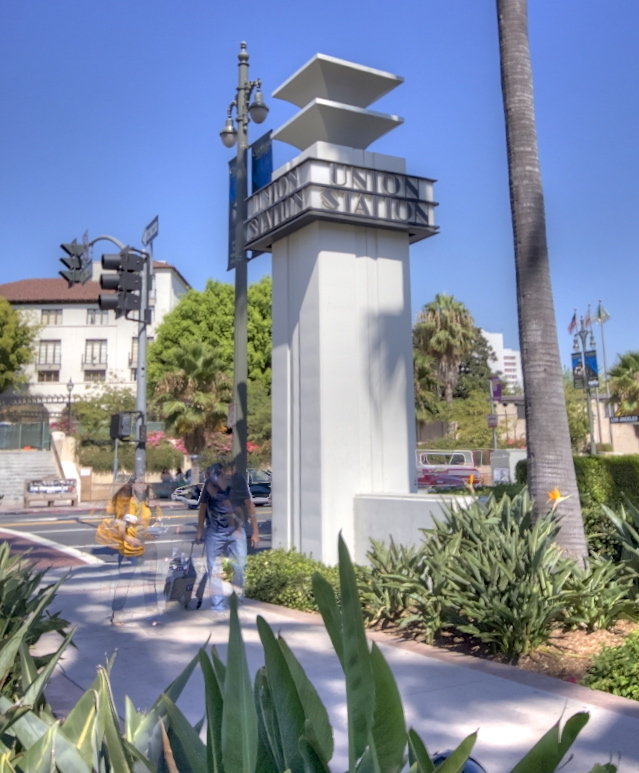
Art Deco Column with "Union Station" lettering may not be original.

We first looked into the Ticket Concourse. It was being used for the filming of the TV program: The Program.
The Ticket Concourse is the
largest room in Union Station. Enormous arched windows decorated
with Spanish grillwork soar nearly three stories high. The
painted-beamed ceiling exemplifies Spanish Colonial Revival
architecture. The Spanish tile floor has patterned marble insets
placed like a carpet runner along the front of the original ticket
counter, which spans 115 feet. In the heyday of the station, a
women's lounge with dressing rooms, a men's restroom with showers, a
smoking room, and a four-chair barbershop were located through doors at
the north end of the concourse.

Original Ticket Windows
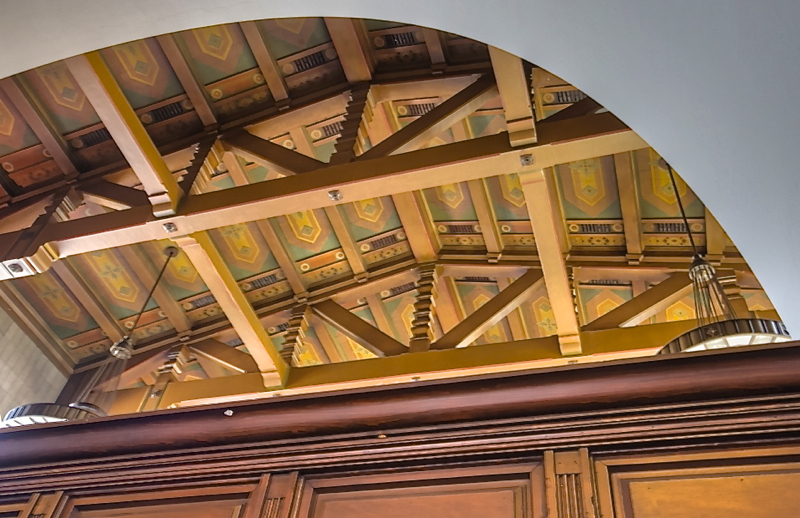
Ceiling of the Ticket Concourse. The chandeliers here and in the Waiting Room each weight 1.5 tons (3,000 lbs.).
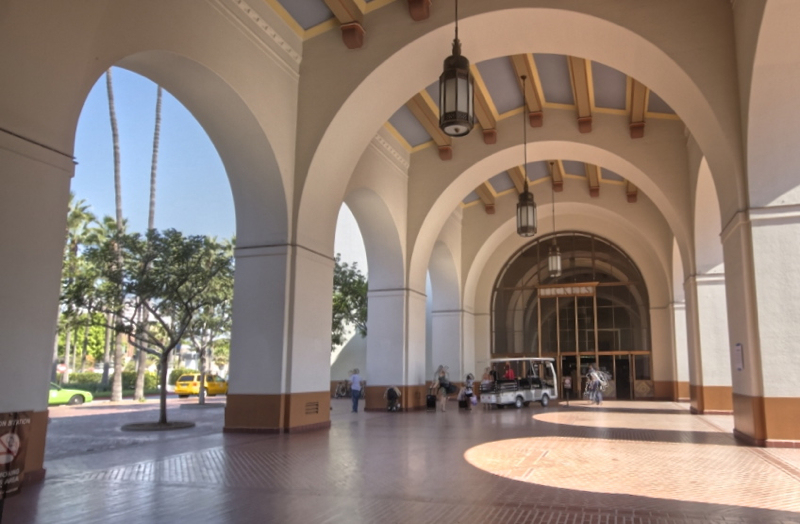
Opposite the Ticket Concourse is the Arcade that leads to the Harvey House.
Fred Harvey Restaurant
The station's original dining room was part of the famous chain of Fred
Harvey eateries that served railroad depots. Designed by
architect Mary Colter, who designed many buildings for the Fred Harvey
Company, the space retains its own unique character while integrating
seamlessly with the rest of Union Station.
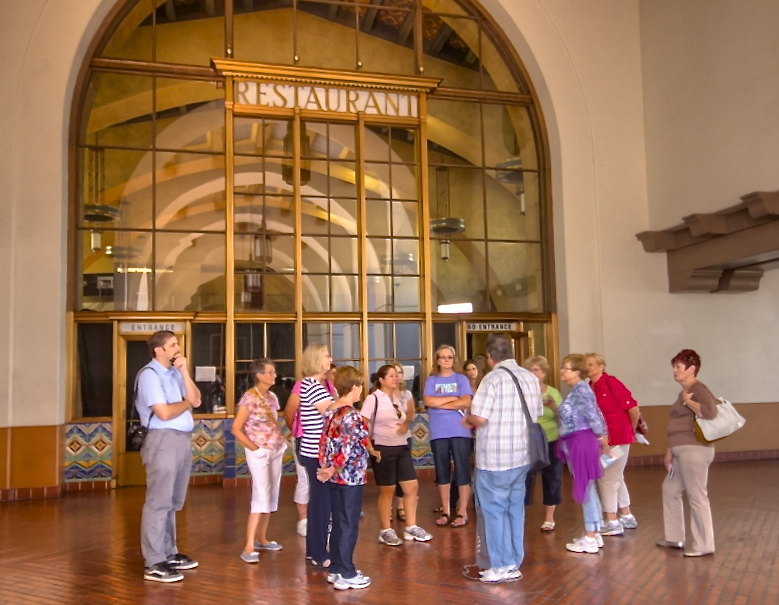
Our group listening to Jay talk about the Harvey House (which was also closed for filming).
(I will add links to my interior shots of the Harvey House taken on previous Train Days.)
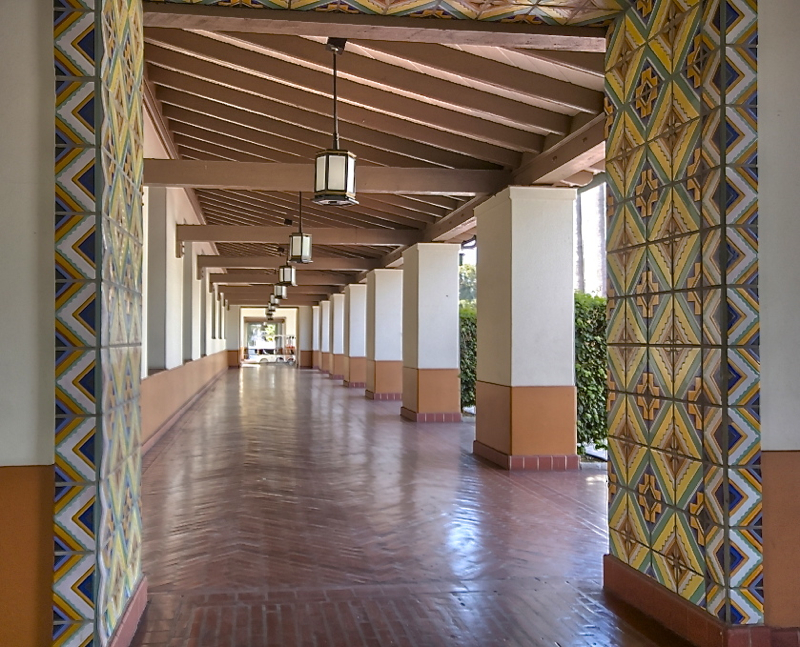
Exterior Hallway, formerly used by passengers who had arrived by train, on the west side of the Harvey House.
Above and Below.

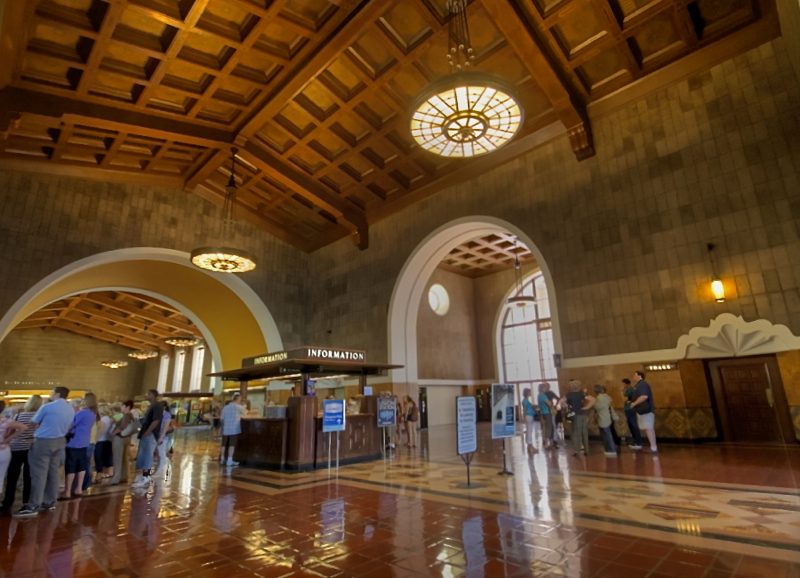
Vestibule.
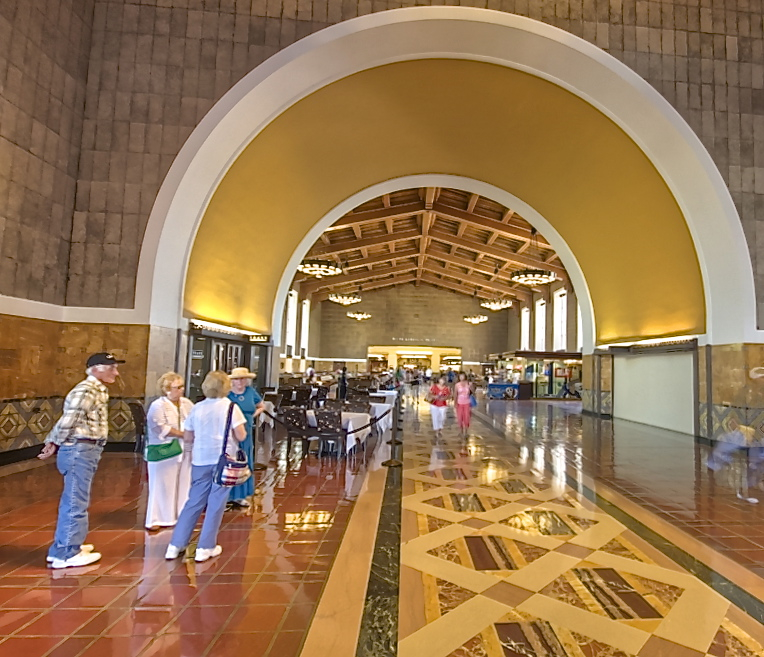
From the Vestibule, we walked down the original inlaid tile, which looks like a carpet, to the Waiting Room.
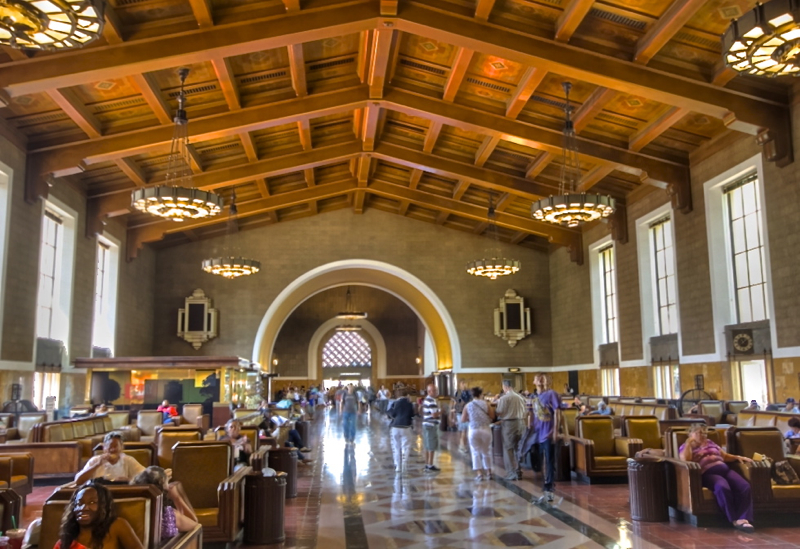
The Waiting Room
The high vaulted ceiling reinforces the spaciousness of this large
room, complemented by ceiling-height windows that flood the area with
natural light. The wall decorations, like that of the ticket
concourse, features a wainscot of multi-colored Spanish tile below
panels of sienna-colored travertine. The upper walls are faced
with acoustical tile (with corncob contents), a novelty in the
1930s. The rows of wooden and upholstered armchair-like seats are
original to the room.
At the top of each set of windows are blinds that can be lowered.
How is this accomplished, with a crank inserted through one of these
brass features below each window:
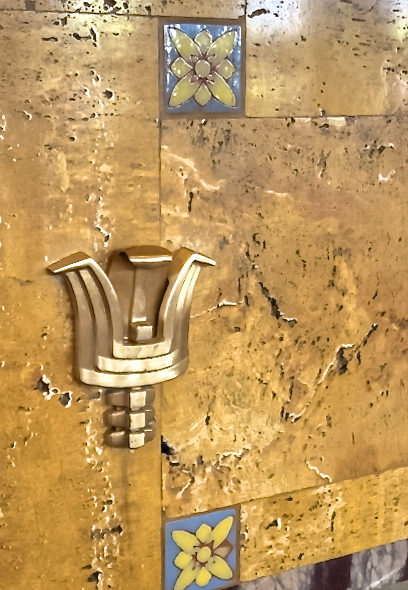

The TRAXX Restaurant, within the Waiting Room, serves lunch and dinner.
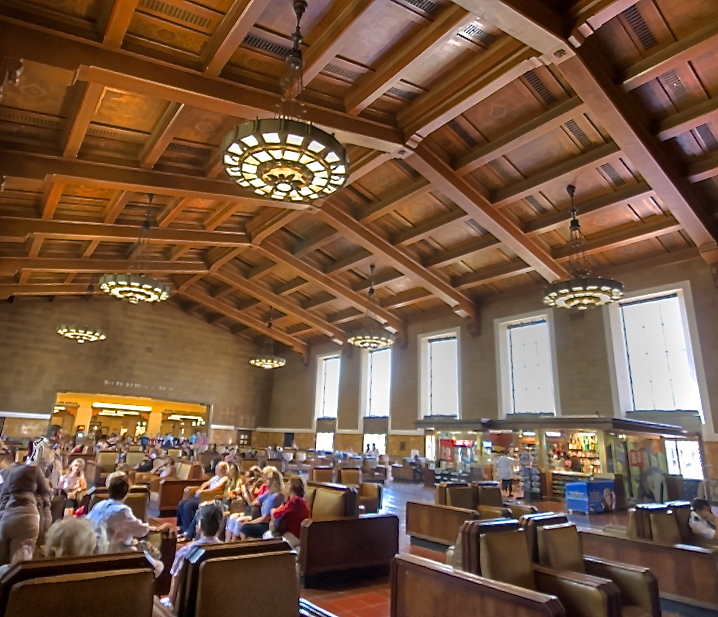
Waiting Room.
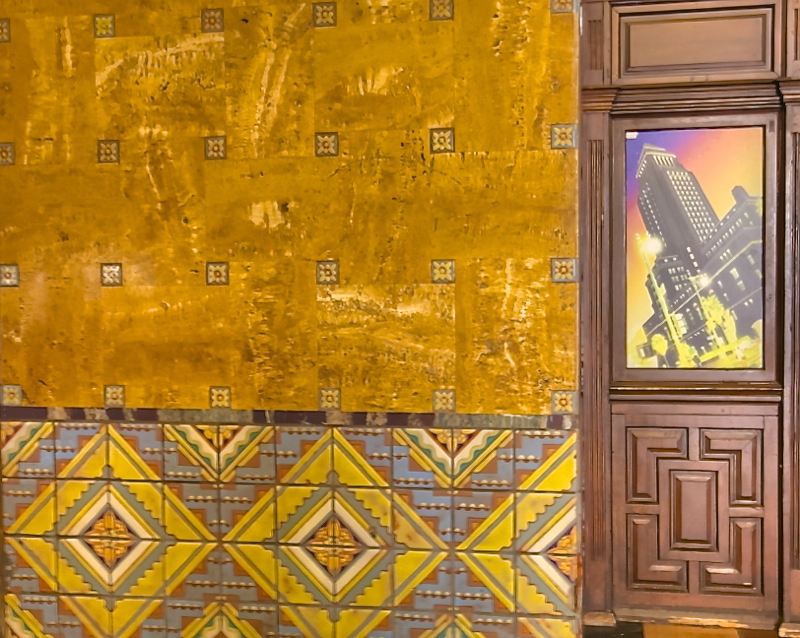
Travertine, Spanish Tile, Rosewood interior walls.

Moorish elements were included as well as in this white arch over the door to TRAXX.

The eight-pointed star is also a Moorish feature.


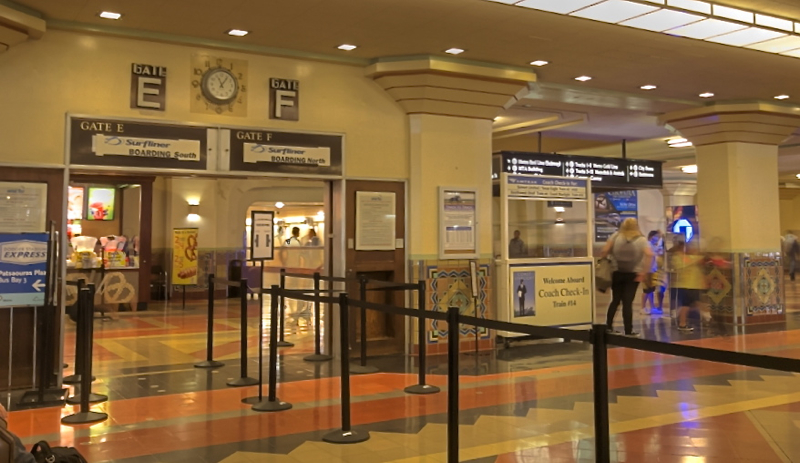
Beyond the Waiting Room is the Arrival and Departure Lobby. "Gates E and F" were left from the many original gates.
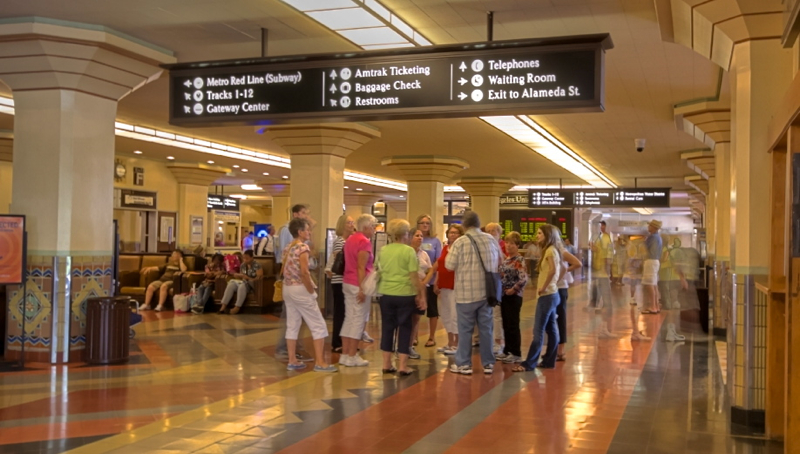
With the added Subway and Light Rail in addition to Metrolink and Amtrak, this station is as busy as it was in its heyday.
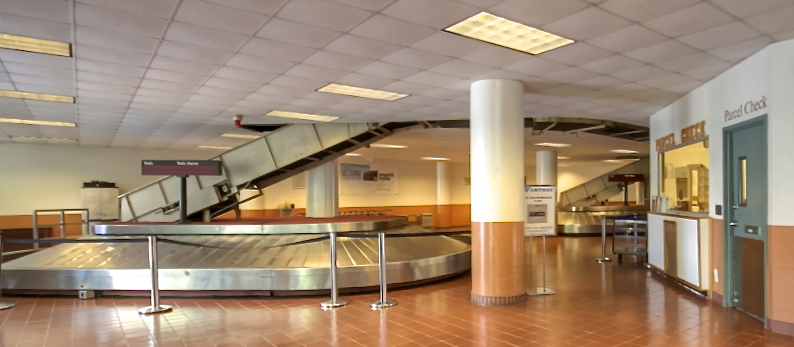
The Baggage Area, resembling an airport baggage area, was upgraded in the 1960s.

Behind Gates E and F is this Welcome sign for arriving train passengers.

Concessions were added in 2010-11.

Tunnel and Trackside
A concrete passenger tunnel, 28 feet wide and 9.5 feet high, extends
for 500 feet beneath the station's tracks. eight pairs of ramps
lead to loading platforms for 16 public tracks. Two of these
tracks now serve the Metro Gold Line. The platforms still have
the original Streamline Moderne (Art Deco) butterfly canopies and
remain almost unchanged since the station opened in 1939.



Gateway Transit Center/East Portal
Referred to as the East Portal, this modern addition to the historic
station in 1995 serves as a gateway to train, subway, and bus
platforms. The facade of the East Portal is a grand archway that
echoes those in the 1939 station. Inside, a 90-foot high steel
and glass dome soars over the lobby. Thematic artwork called City of Dreams, River of History, is one of may located throughout the East Portal.

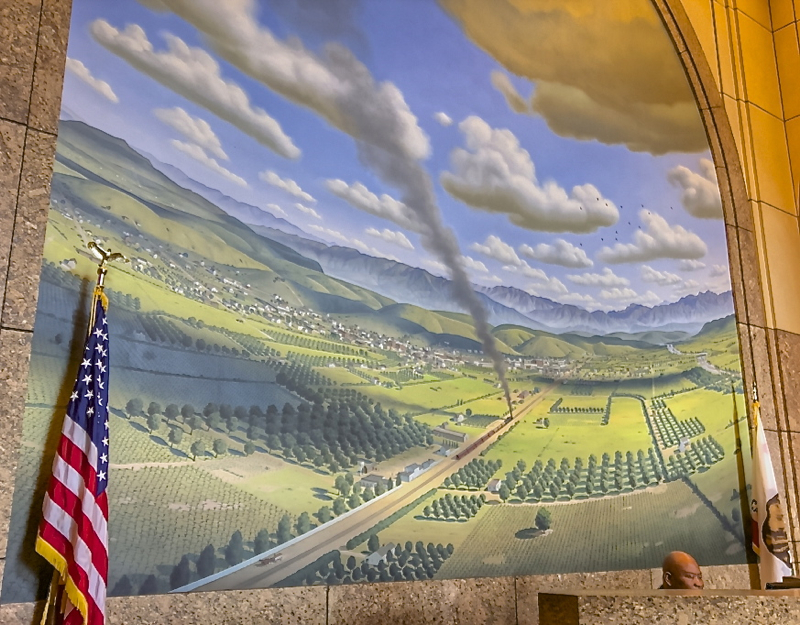
Los Angeles 1870
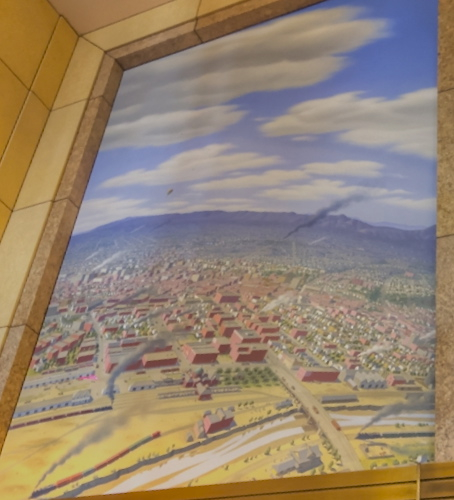
Los Angeles 1910
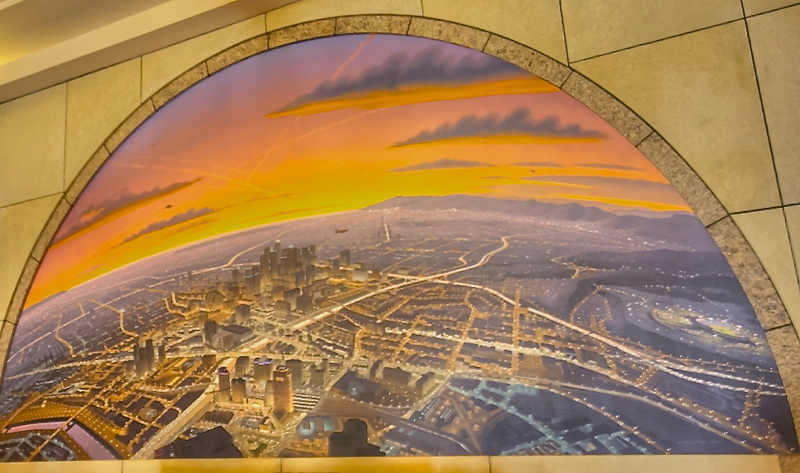
Los Angeles 2000
Views from the South Porch of Metro Gateway Headquarters


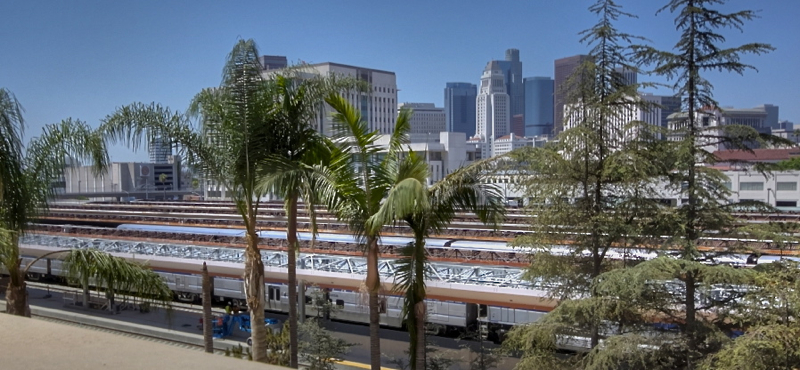
Union Station's new platform canopy and downtown LA
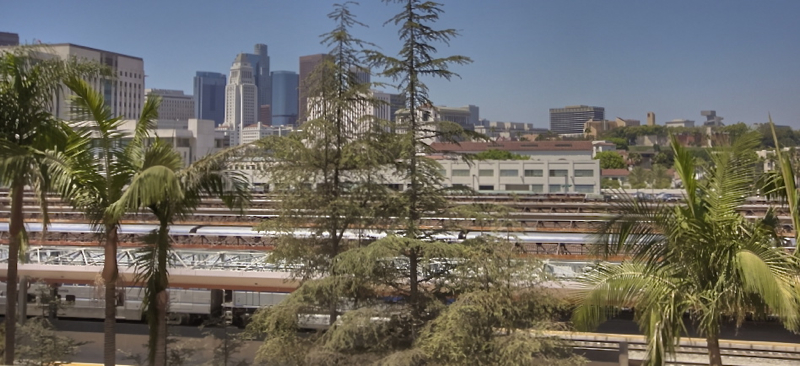
Looking West

Gray 'waterslide' on right is a new high school, central tan bell tower of the new Catholic cathedral.
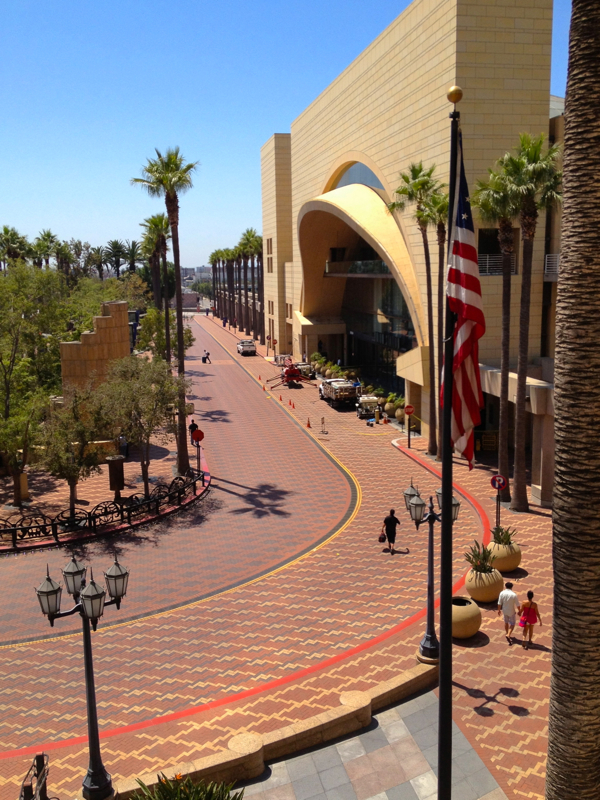
Union Station East Portal
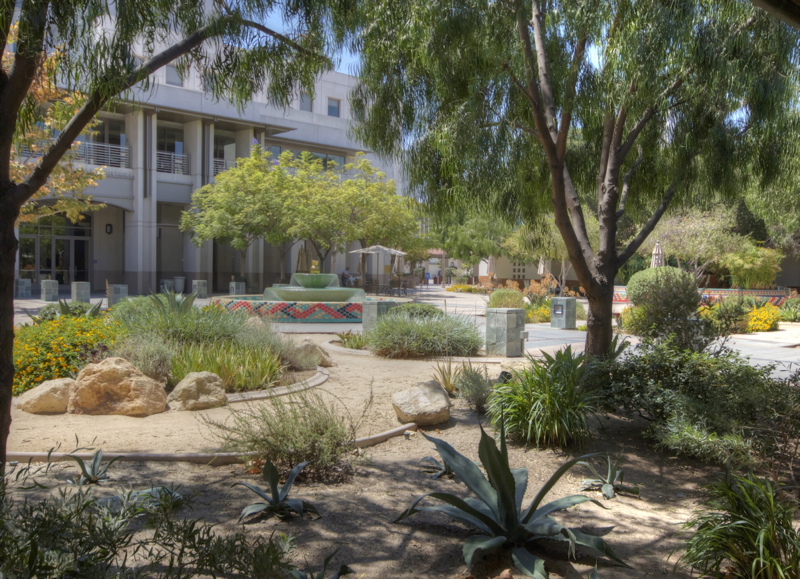
South Patio (If I did not know better, I would have thought this was a photo from Tucson, Arizona.)
North and South Patios
In keeping with the image of Southern California as a sunshine
paradise, lush garden patios blank each side of the waiting room.
The south patio is laid out as a formal garden, with flower beds set
geometrically around small trees. Paved Spanish brick, the center
of the patio features a 16-point star motif.
Our tour ended at exactly 12:30 and we thanked Jay for an excellent, informative tour.
Matthew and I still needed to have lunch, so we walked north, up
Alameda St. to a rail fan's haven, Philippe's where we had an original
French Dip sandwich.
Members of three or 4 generations go shopping together.
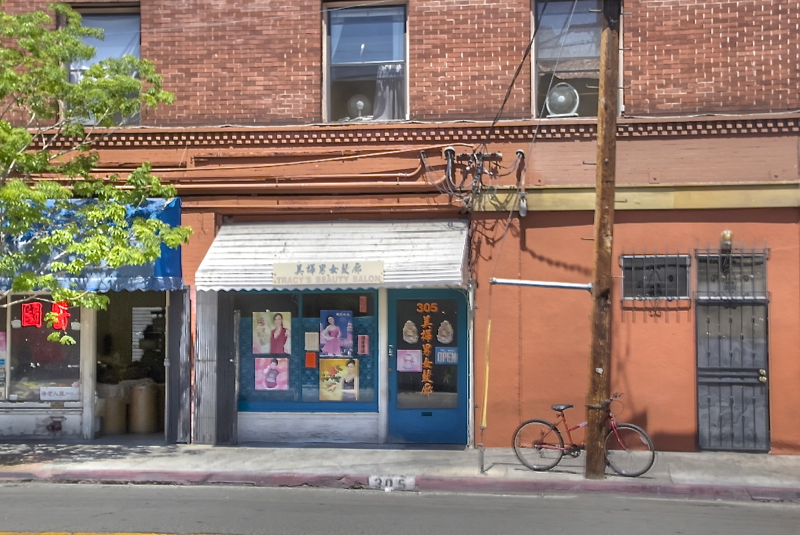
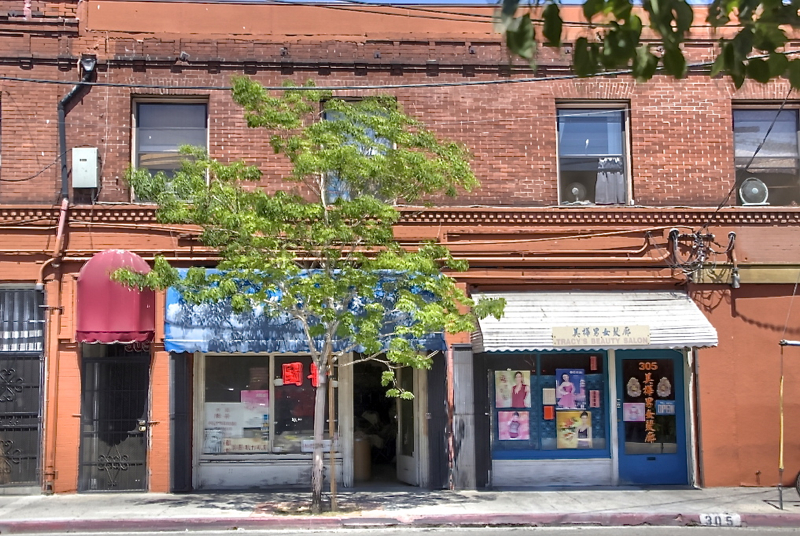
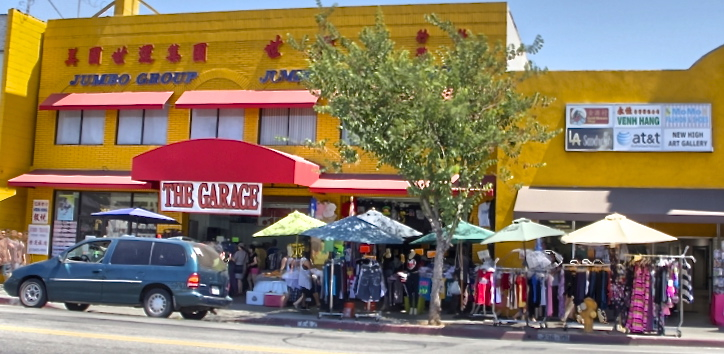
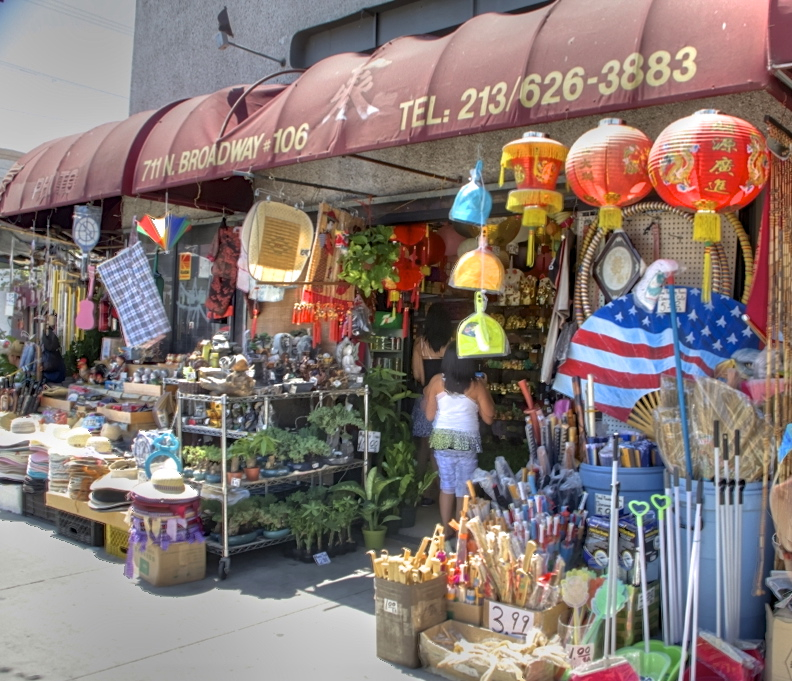
The Olvera Street churches, restaurants, and shops are less than a block from the Station.
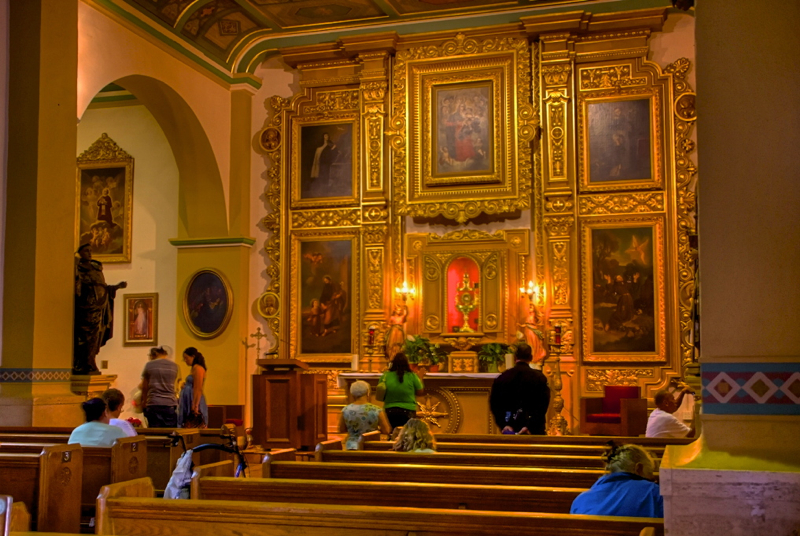
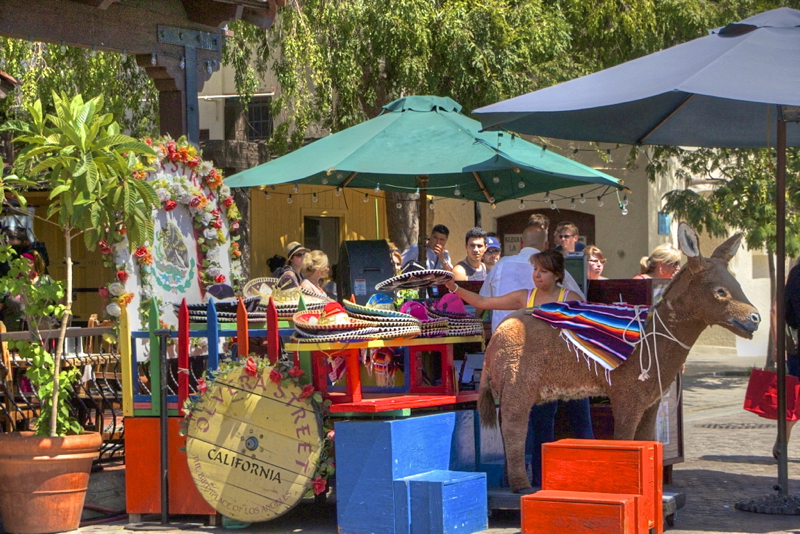
With time for a Starbucks Frap. and a seat in their air conditioning, we were ready to board our Surfliner for Fullerton.
What an excellent day-trip to Los Angeles and its Union Station Walking Tour!
LINKS
Los Angeles Conservancy -- Preserving Los Angeles' Cultural Heritage http://www.laconservancy.org/
(Click any photo at the following sites to get a double-sized copy; Click BACK in your browser to return to this page.)

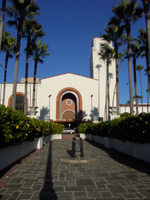 The
Union Station tour covers architecture, art, culture, and social
history as it celebrates one of the great landmarks of Los Angeles, the
1939 Union Station.
The
Union Station tour covers architecture, art, culture, and social
history as it celebrates one of the great landmarks of Los Angeles, the
1939 Union Station.






































